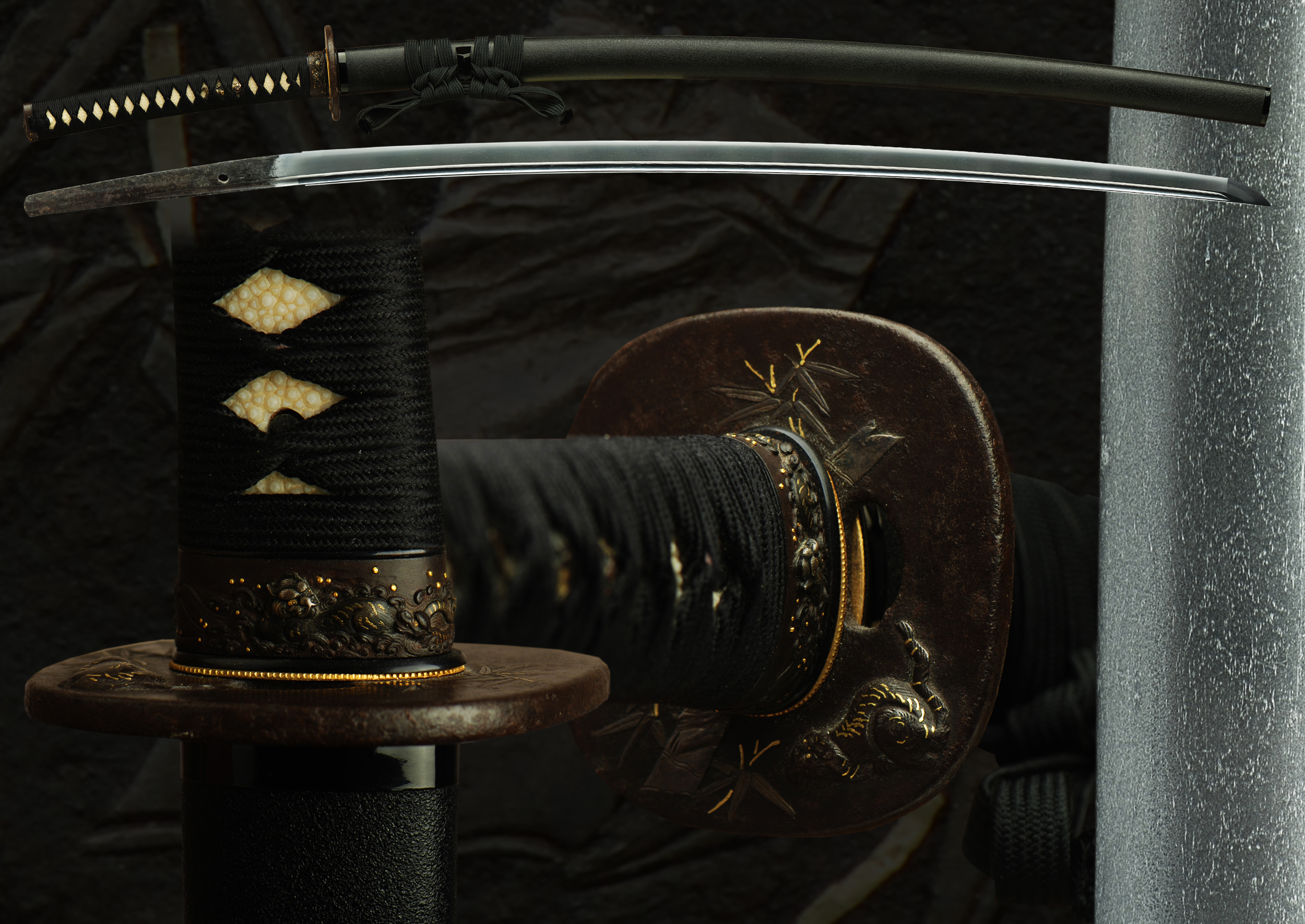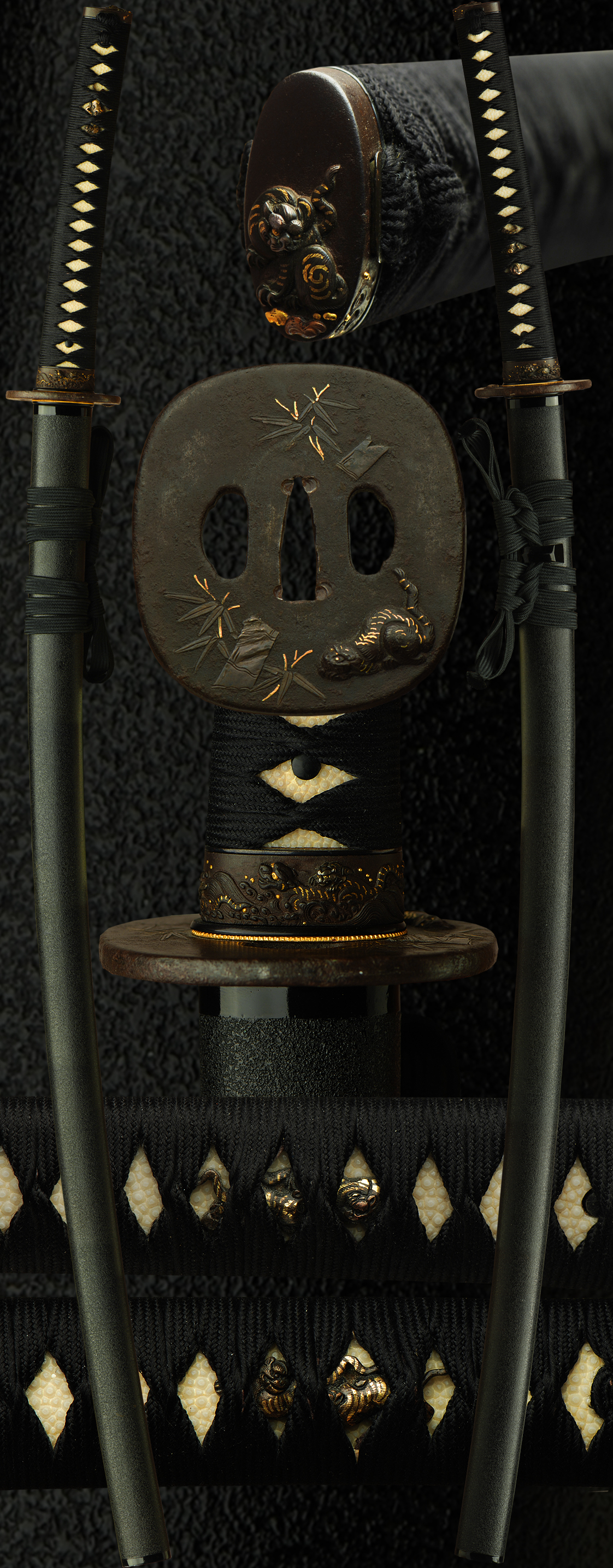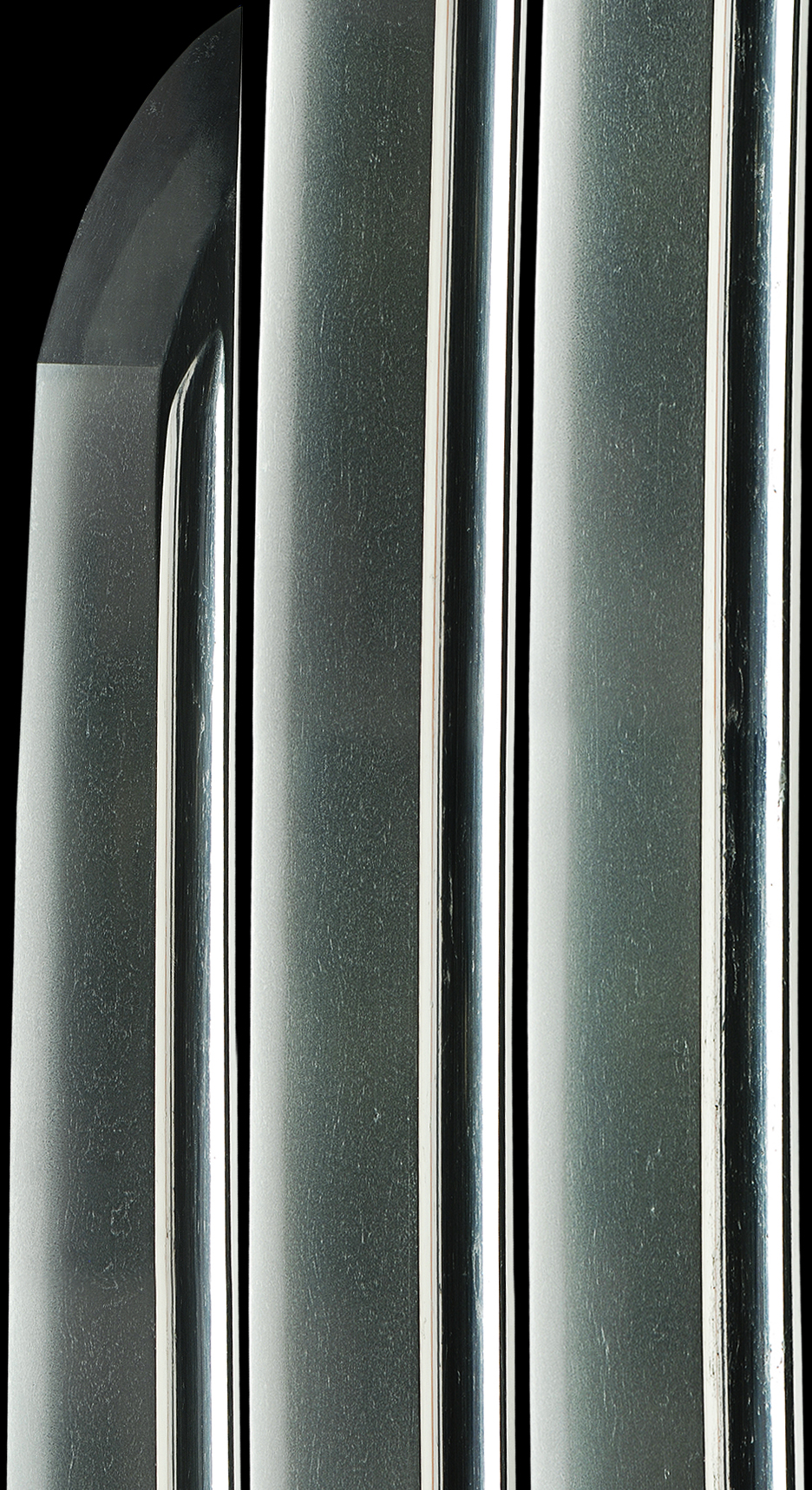This wonderful katana has great workmanship and a beautiful Hoso-suguha hamon wonderfully controlled. The blade is ubu with one hole. There is bohi which greatly adds to the blades overall shape or appearance. A spectacular collection of activity with many chikei and more. Ji-nie and utsuri can be seen. It is in a very beautiful polish with an outstanding set of koshirae. The hamon is very nicely done with a modest nioi-guchi frosted with nie. It has some hataraki and ji-nie throughout. The hada is nicely forged with a slick looking itame some small areas of wavy masame. The boshi is a ko-maru finish. This early katana has a fine sugata. The mounts are in very nice condition and add to the overall value of this sword. The fittings are sound and have a deep traditional look and display very well. Overall this is a fine Japanese katana.
The mounts are of very good quality from tsuka to saya and are completely adorned in tiger motif.. The theme of the menuki beautifully finish the tsuka and saya with black tsukaito wrap and sageo. The saya is black lacquer with ishime texture. The tiger menuki motif was often used as a theme for Asian art. Mythological subjects and auspicious symbols were sometimes used as motifs for Japanese sword furniture. Motifs could stand alone as designs unto themselves, particularly if they had seasonal or symbolic associations, but they were also used as decorative patterns surrounding or backing more pictorial motifs such as this. The habaki is finished in gold wash. The tsuba is iron and also of tiger motif with bamboo and gold inlay..
This is a wonderful old sword for a collector who wishes to view and study an older blade in exquisite condition. Also this sword can make for a high end Iaito as the mounts are solid and useable if necessary.
- Mei: Mumei
- Date: Koto (1400’s-1500’s)
- Nagasa: 28-5/8 inches
- Sori: 18.0 mm
- Width at the ha-machi: 2.03 mm
- Width at the yokote: 20.9 mm
- Thickness at the mune-machi: 7.0 mm
- Construction: Shinogi zukuri
- Mune: Iori
- Nakago: Ubu
- Kitae: Itame/mokume
- Hamon: Suguba
- Boshi: Maru
- Condition: Good polish
The Hokke School constitutes a lineage of sword making located in Bingo province separate of that of the Mihara School. Its ancestor is Kokubunji Sukekuni (国分寺助国) who had moved at the very end of the Kamakura period from Bizen to the Ashida district of Bingo province. The Hokke School was then locally active from the Nanbokucho to the late Muromachi period and its name goes back to the smith Ichijo (一乗) who signed with the very supplement “Hokke”. Ichijo was active around Oei (1394-1428). Due to the location of the school, it is also referred to as Ashida-Mihara and some sources also refer to it as Hokke-Mihara. Other Hokke smiths were for example Kaneyasu (兼安), Yukiyoshi (行吉), Shigeyasu (重安), Shigeie (重家), and Nobukane (信兼).
Email us if your interested in this item and remember to include the order number for this item: fss-753.
kantei-sho (鑑定書) No 385115 katana, mumei: Hokke (法華)
nagasa 2 shaku 4 sun Migi wa tô-kyôkai ni oite shinsa no kekka, hozon-tôken to kantei-shi kore o shô-suru.
(右は當協會に於て審査の結果保存刀剣と鑑定しこれを証する)
Heisei nijûninen sangatsu jûkunichi (平成二十二年三月十九日)
kôeki-zaidan-hôjin (公益財團法人): Nihon Bijutsu Tôken Hozon Kyôkai (日本美術刀劍保存協會)
Appraisal
katana, unsigned: Hokke
nagasa ~ 72.7 cm According to the result of the shinsa committee of our society we judged this work as authentic and
designate it as hozon-tôken. March 19, 2010
[Foundation] NBTHK
For Sale

























